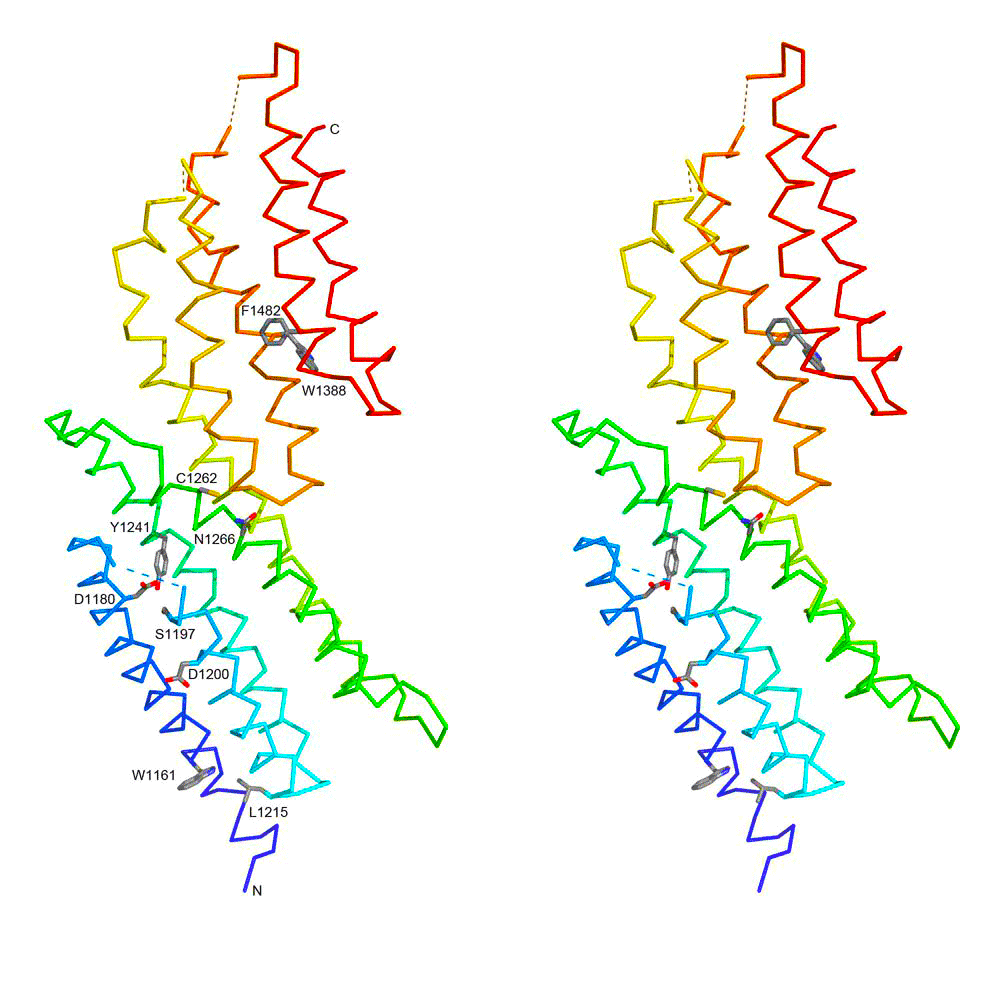
Stereo diagrams of structural model of domain C and domain D of the MUN domain from mouse Munc13-1. We inferred remote homology between Munc13 MUN domain and vesicle tethering complexes. Most core components of the neurotransmitter release machinery have homologues in other types of intracellular membrane traffic, likely underlying a universal mechanism of intracellular membrane fusion. However, no clear similarity between Munc13s and protein families generally involved in membrane traffic has been reported, despite the essential nature of Munc13s for neurotransmitter release. This crucial function was ascribed to a minimal Munc13 region called the MUN domain, which likely participates in soluble N-ethylmaleimide sensitive factor attachment protein receptor complex (SNARE) assembly and is also found in Ca(2+)-dependent activator protein for secretion. We have now used comparative sequence and structural analyses to study the structure and evolutionary origin of the MUN domain. We found weak yet significant sequence similarities between the MUN domain and a set of protein subunits from several related vesicle tethering complexes, such as Sec6 from the exocyst complex and Vps53 from the Golgi-associated retrograde protein complex. Such an evolutionary relationship allows structure prediction of the MUN domain and suggests functional similarities between MUN domain-containing proteins and multisubunit tethering complexes such as exocyst, conserved oligomeric Golgi complex, Golgi-associated retrograde protein complex, and Dsl1p. These findings further unify the mechanism of neurotransmitter release with those of other types of intracellular membrane traffic and, in turn, support a role for tethering complexes in soluble N-ethylmaleimide sensitive factor attachment protein receptor complex assembly. In the above picture, side chains of conserved residues are shown as sticks. N- and C-termini are marked. Long loops are omitted with dotted lines connecting the end points.